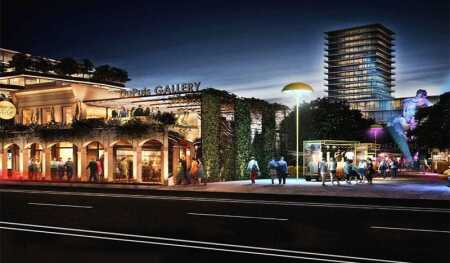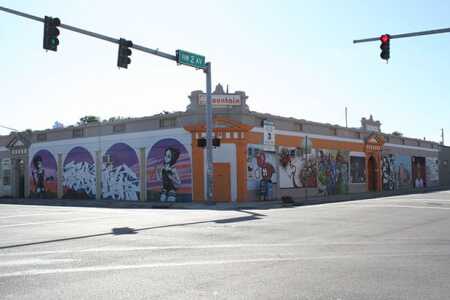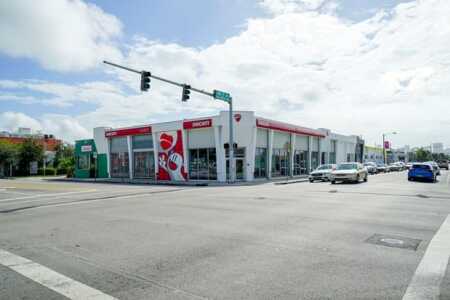As pop-up outdoor dining and alleyway murals become more commonplace, three speakers at 2019 ULI Florida Summit advocated for a more crafted approach to placemaking by infusing projects with local art and entertainment.
“Food trucks and murals don’t make a unique place anymore because they are all over the place,” said Tony Cho, president of Metro 1 Commercial, which is redeveloping Miami’s Wynwood and Little Haiti communities. “It’s really about working with locals and understanding what’s meaningful to them, especially if you’re not a local.”
Led by Carol Coletta, senior fellow with the Kresge Foundation, the session on creative placemaking examined what has—and has not—worked. In addition to Cho, speakers included Steve Lindley, a Cushman & Wakefield executive director, and Rae Vassar, a senior designer with Groundswell Design Group.
“Nothing about making a place lasting is easy and everything about it is critical,” said Coletta, of Kresge’s America Cities Practice. “Making a place that lasts requires special attention to how a place welcomes all and bridges the divides that separate us increasingly in America.”
Street Art and Scale
Raised in his grandmother’s interfaith commune before attending Northwestern University, Cho said that his projects have worked because they seek local input early, downplay cars, and scale in a way that respects the existing community.
“We don’t build buildings. We build communities and then we build buildings for those communities,” he said. “Everything now is experiential and community-based environments. People are craving that. What people are asking for is a place where people can interact.”
Cho said he seeks out real estate holdings in underserved areas “with raw grit” and then works with local artists and community groups to distill the ingredients that make it unique, whether that means theater, dress, beverages, or music.
In Wynwood, many murals were there before Cho arrived on the scene. Creating a taxing district generated funds to hire a curator, who helped elevate the street art. International artists then collaborated with the homegrown ones on new murals. Soon, Wynwood’s identity exploded with locals and visitors tagging themselves on Instagram, Facebook, and Twitter posts.
Rather than overwhelming Wynwood with skyscrapers, Cho’s group kept it to scale.
“We didn’t go 20 stories. We kept it [at] five to eight stories,” he added. “That is a testament to why Wynwood is what it is today. Traveling around the country, people ask: What is the secret sauce? You have to respect the unique place.”
In addition to deemphasizing the car, Cho said that his projects aim to create safe places where people feel comfortable. Working with the government to reclaim overlooked pockets can be slow, but tapping valuable public spaces is key to creating redevelopments that age well, he added.
Go Local Early
One community that literally cried out for a more thoughtful approach to redevelopment was Phoenix, Arizona. Lindley cited an apartment building constructed in a gentrifying arts district there.
The building, he said, was “very, very beige.” He may have used “very” three times. It had so little connection to its surroundings that, next to it, a muralist painted a larger-than-life image of a woman weeping.
Lindley also underscored the need to hire local talent. A downtown Phoenix redevelopment team sought to raise the area’s profile by bringing in an internationally renowned mural artist. The final product was detailed and eye catching but featured a pair of grizzly bears—not really an endemic species in Phoenix.
Getting it right does not have to blow up the bottom line and it comes with a payback, the capital markets executive said.
“We are not philanthropists. We are in it to make a profit,” he said. “But people are attracted to places that have a soul. Customers, tenants, and employees want to be there. It adds value to us as developers, but it also adds value to the communities.”
Lindley said that he saw a big payoff with the repositioning of Phoenix’s old 1957 Goldwater’s Department Store. Developers quickly partnered with local arts and culture groups. Before plans finalized for offices in the old retail space, community partners had unearthed from Goldwater’s basement a “treasure trove” of items that helped brand the project.
“When something is authentic in a place, you can feel the people and the soul of the place,” he said. “It can be food, dance, design—it doesn’t have to be murals.”
Experiment First
Before investing in placemaking concepts, Rae Vassar of Groundswell Design Group in Philadelphia advocated for starting with temporary installations.
Her group remade part of the Spruce Street Harbor Park on the Delaware Riverfront in Philadelphia. Crews extended floating stages into the harbor, cantilevered hammocks, and installed boardwalks over old sidewalk. Food vendors offered fare ranging from vegan to gourmet tacos.
That project was intended to reinvigorate an underused waterfront park during the summer. The budget was modest, using some rented items, Vassar said. Ultimately, it generated so much commerce that it was extended.
“As the park became a destination, adjacent businesses reported their revenues were up by 30 percent,” she said.
Riverplay on the Mississippi Riverfront in Memphis, Tennessee, employed ground murals, basketball courts, and food vendors to remake the venue. Volunteers and schools partnered on it. Launched in 2017, the temporary park lives on today.
“It reframed how Memphis saw the riverfront,” she said.
Philadelphia’s Porch at 30th Street Station is a once-overlooked public space with 10,000 passersby daily. Hired by Philadelphia’s University City District, Groundswell redesigned the space with a series of planters, decking, and turf to create intimate gathering spots. At night, market lighting brings scale to the gateway hub.
Christopher Flagg, of the Jacksonville, Florida–based Haskell Company, said that the session overall stood out for him as an inspiration for how projects can be organic and dynamic.
“Because art and culture really need to be the center of all creative thinking,” the operations principal said.
The time is right because technology, he added, now drives the recognition of these spaces.







